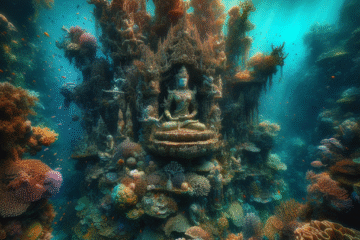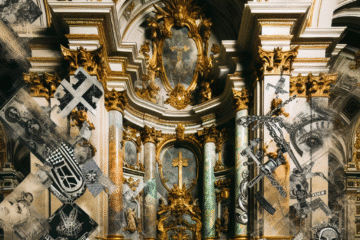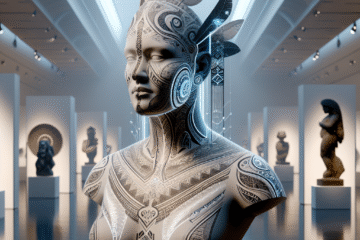
Image title: Blind Orion Searching for the Rising Sun
Medium: Oil on canvas
Date: 1658
Source:
The Met Collection
“
Better it is to live one day seeing the rise and fall of things than to live a hundred years without ever seeing the rise and fall of things.
”
— The Buddha
Algorithmic Brushstrokes: The Rise of Neural Aesthetics in Contemporary Painting
Introduction: Where Art Meets Algorithm
In the evolving landscape of 21st-century art, a new genus of creators has emerged—those who collaborate not with human instructors, but with neural networks. These artists use artificial intelligence—particularly machine learning models like generative adversarial networks (GANs)—to dream up patterns, textures, and forms that were unthinkable before the digital age. This convergence of code and canvas signals a profound transformation in both the making and understanding of art. What happens when creativity is outsourced, in part, to machines? How do we reimagine authorship, aesthetics, and emotion in images conjured by algorithms?
Chapter 1: From Mechanics to Abstraction—A Century of Technological Influence
The dialogue between art and technology is not new. The Industrial Revolution brought about mechanical reproduction, influencing the likes of the Futurists and Constructivists in the early 20th century. As machines became symbols of speed, power, and future-thinking, artists began incorporating them into both subject and process. With the rise of photography and later, video, the idea of what could be considered ‘fine art’ began to shift. Abstract Expressionism, Minimalism, and Conceptual Art followed, each movement wrestling with the idea of authenticity, gesture, and the limits of human creativity.
This historical arc sets the stage for neural aesthetics. If Jackson Pollock’s drips were the subconscious rendered visible, and Donald Judd’s geometric forms were logic given form, then AI-generated art represents cognition abstracted—patterns born from data, not DNA.
Chapter 2: Rise of the Neural Network—A New Creative Partner
Neural networks, particularly GANs, function by training one network to generate data and another to evaluate it. This process mimics a kind of artificial creativity, generating forms that are often eerily familiar yet profoundly alien. Early pioneers like Mario Klingemann and Refik Anadol have demonstrated how these systems can create haunting, surreal visuals—distorted faces, flowing cities, infinite blooming patterns—that feel both futuristic and reminiscent of baroque dreamscapes.
Contemporary painters such as Sougwen Chung and Anna Ridler take this digital output further. These artists use AI-generated outputs not as final products, but as raw material—a foundation for traditional media like oil paint and charcoal. Their canvases blur boundaries: digital birth, analog execution. They become co-creators, guiding and translating the machine’s ‘imagination’ into textured, human form.
Chapter 3: Neural Aesthetics on Canvas—Materializing the Digital Mind
Though the visual output of neural networks often remains on screens, some artists are bringing these ephemeral forms into physical space. Paintings inspired by algorithmic generations introduce a tactile dimension to digital abstraction. Canadian artist Jason Salavon, for example, paints over algorithmic visualizations, layering subjective gestures over objective code. Others use projected AI animations as guides, tracing data-born phantoms onto wood and canvas.
What results is a fascinating tension: the deep learning system, trained on terabytes of images, collapses monumental visual archives into singular, uncanny forms—and the human artist, engaging with the seductions and failures of the algorithm, rehumanizes these patterns through stroke and pigment.
Chapter 4: Redefining Authorship—Machine, Muse, or Tool?
One of the most pressing philosophical questions in neural aesthetics is the issue of authorship. If an artist trains a model that generates images, who is the artist—the programmer, the machine, or the person who interprets and finishes the work? This echoes earlier 20th-century debates around mechanical reproduction, particularly in Walter Benjamin’s famed essay, “The Work of Art in the Age of Mechanical Reproduction.” But where Benjamin feared the loss of aura, today’s artists see in AI an opportunity to co-create with autonomous systems.
This redefines the artist from sole originator to curator, conductor, or editor. Much like John Cage’s embrace of chance, or Sol LeWitt’s instructional conceptualism, the new frontier of AI art is less about control and more about the orchestration of systematized potentiality. The authorship thus becomes a shared space—one shaped equally by training data, algorithmic behavior, and human selection.
Chapter 5: Cultural Resonance and the Future of the Brushstroke
Ultimately, the integration of AI into painting invites viewers to reconsider the very purpose of visual art. Is it to express the inner self, reflect society, provoke emotion, or perhaps mirror the computational logic increasingly governing our lives? These hybrid works—the fusion of algorithm and acrylic—may foreshadow a broader cultural shift toward co-evolution with intelligent machines. Just as the printing press democratized knowledge and photography transformed memory, neural aesthetics signals the dawn of a new visual literacy.
Artists working at this frontier are not merely painting images—they are painting with intelligence, using data as inspiration and neural networks as brushes. As we venture deeper into this collaboration between human and machine, we may discover that creativity itself is not being replaced, but re-expanded, revealing cracks in the algorithm where beauty, error, and surprise still dwell.

Image description:
Diese Datei ist eine Kopie von “Neural pathway diagramm.svg” und ersetzt die engliche Legende durch deutsche bzw. lateinische Bezeichnungen. Die optischen Informationen der Augen werden mit dem Nervus opticus, der einen Teil des Gehirns darstellt, zum Chiasma geleitet. Ein Teil der Neurone kreuzt das Chasma, der andere Teil wird auf der gleichen Seite zum Corpus geniculatum lateratis geleitet. Dort erfolgt eine synaptische Übertragung auf Neurone, welche in die primäre Sehrinde ausstrahlen.
License:
CC BY 4.0
Source:
Wikimedia Commons
Useful links:


